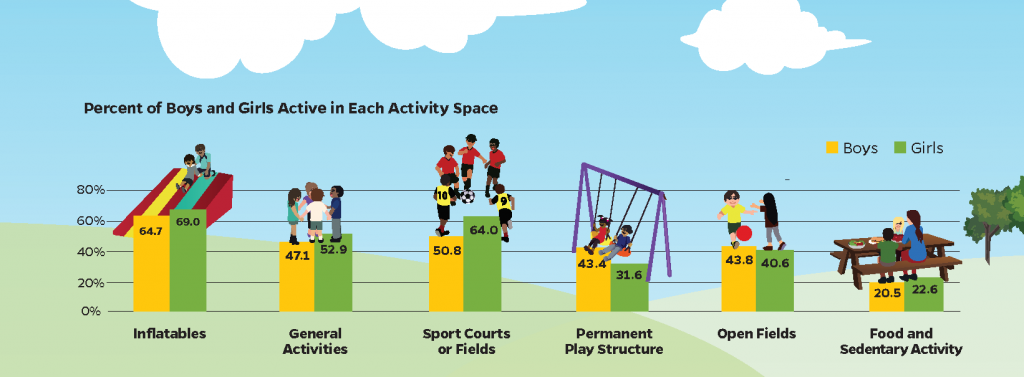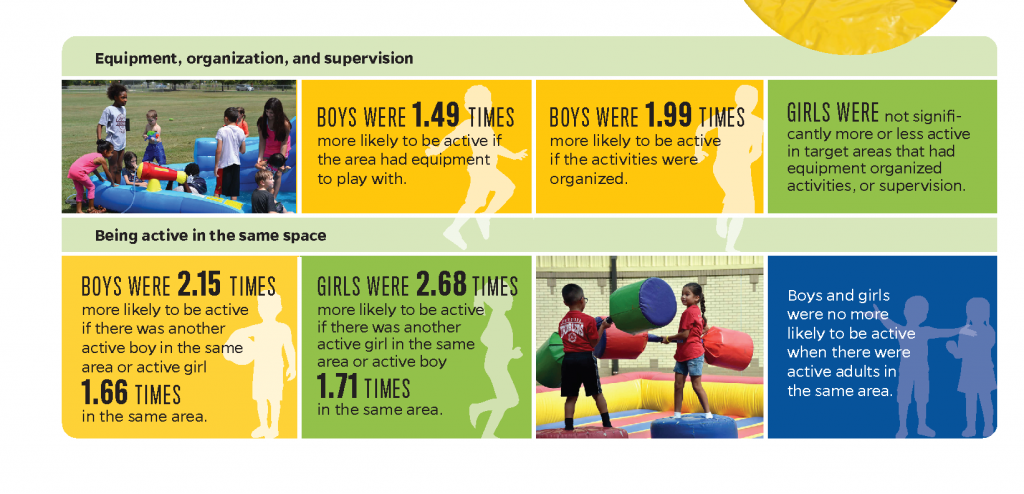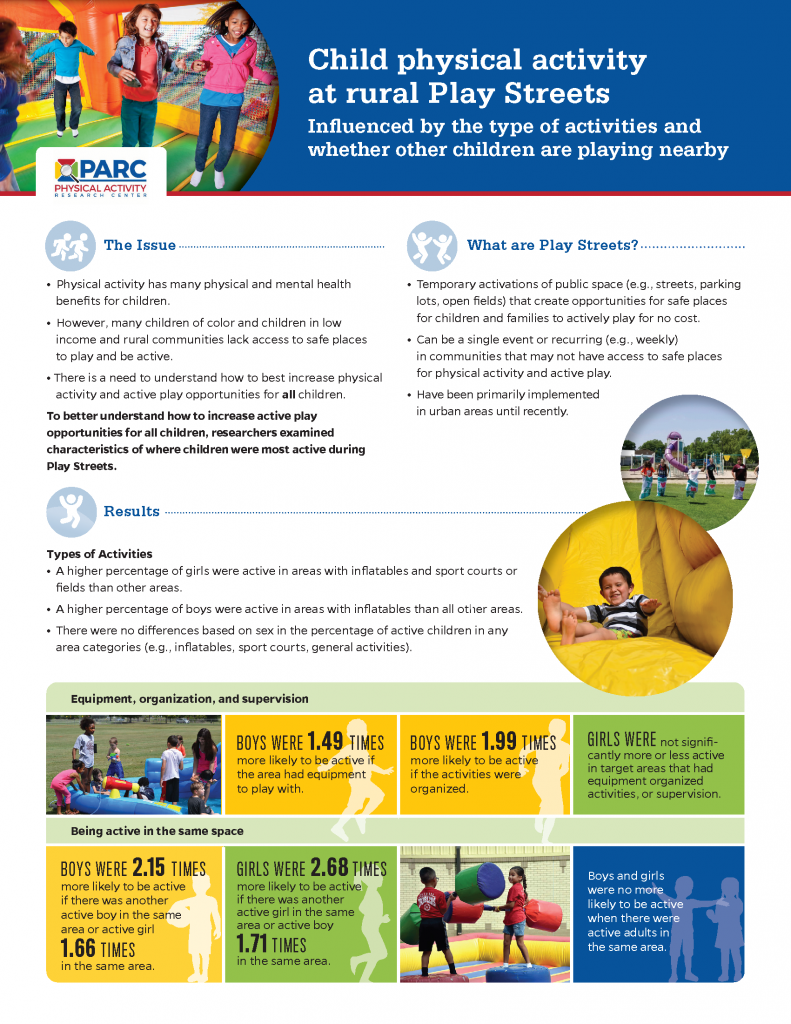Differences in child physical activity levels at rural Play Streets due to activity type and sex
By: Tyler M. Prochnow, M. Renée Umstattd Meyer, and Christina N. Bridges Hamilton from Baylor University; and Keshia M. Pollack Porter from Johns Hopkins University
Physical activity is linked with promoting health and preventing obesity among children, and active outdoor play is highly important for healthy child development. Yet children today do not play outside as much as their parents did. Safety concerns and communities that lack access to safe places for play contribute to this decline in physical activity and outdoor play. Some communities organize Play Streets—temporary street closures that provide equipment, games and a safe, supervised place to play—to help encourage more children and families to engage in active outdoor play. This study systematically identified and reviewed information about Play Streets from 36 sources of non-academic literature, such as websites and local reports, to learn about how Play Streets are typically organized.
Results
Types of Activities
- A higher percentage of girls were active in areas with inflatables and sport courts or fields than other areas.
- A higher percentage of boys were active in areas with inflatables than all other areas.
- There were no differences based on sex in the percentage of active children in any area categories (e.g., inflatables, sport courts, general activities).

Equipment, organization, and supervision
- Boys were 1.49 times more likely to be active if the area had equipment to play with and 1.99 times more likely to be active if the activities were organized.
- Girls were not significantly more or less active in target areas that had equipment organized activities, or supervision.
Being active in the same area
- Boys were more likely to be active if there was another active boy (2.15 times) or active girl (1.66 times) in the same area.
- Girls were more likely to be active if there was another active girl (2.68 times) or active boy (1.71 times) in the same area.
- Boys and girls were no more likely to be active when there were active adults in the same area

Implications
- A best practice is to include a wide variety of activities at Play Streets as many of the activity areas promoted active play among children. Varying the activities based on preferences of the local children and families is ideal and allows organizers to adapt.
- Play Streets are social! Children were more likely to be active at Play Streets when in areas with other active children. Plan to offer collaborative active play options and games involving multiple children at once to maximize active play!
- Areas with loose equipment and organized activities may encourage more participation from boys; however, girls did not need equipment or organized activities to be active.
- While food and sedentary activity areas had the lowest activity levels, they represent vital places for children and families to rest, rehydrate, and get food as well as promote other types of inclusive activities that foster social connections.
Methodology
- Four community organizations from rural communities across the United States put on four Play Streets each for a total of 16 Play Streets (each 3 hours long) in the summer of 2017.
- Play Streets were divided into different areas primarily based on activities present within the area: inflatables, general activities, sport courts or fields, permanent play structures, open fields, and food and sedentary activity areas.
- An evaluation team observed each area and recorded age (child, teen, adult, older adult), sex (female, male), and activity level (sedentary or active) of each person inside each area.
- The evaluation team also noted whether area was organized, supervised, or contained equipment.
Findings from this lay summary are available in the full article, published in the Journal of Healthy Eating and Active Living:
Prochnow TM, Umstattd Meyer MR, Bridges CN, & Pollack Porter KM. Differences in child physical activity levels at rural Play Streets due to activity type and sex. Journal of Healthy Eating and Active Living. 2020.
Suggested Citation for Lay Summary:
Prochnow TM, Umstattd Meyer MR, Bridges CN, & Pollack Porter KM. Differences in child physical activity levels at rural Play Streets due to activity type and sex. A Lay Summary. Physical Activity Research Center; Waco, TX: Baylor University; and Baltimore, MD: Johns Hopkins Bloomberg School of Public Health; 2020.
This lay summary was made possible with funding from the Physical Activity Research Center. The research that generated the lay summary was led by Drs. Keshia M. Pollack Porter from Johns Hopkins Bloomberg School of Public Health and M. Renée Umstattd Meyer from Baylor University.

